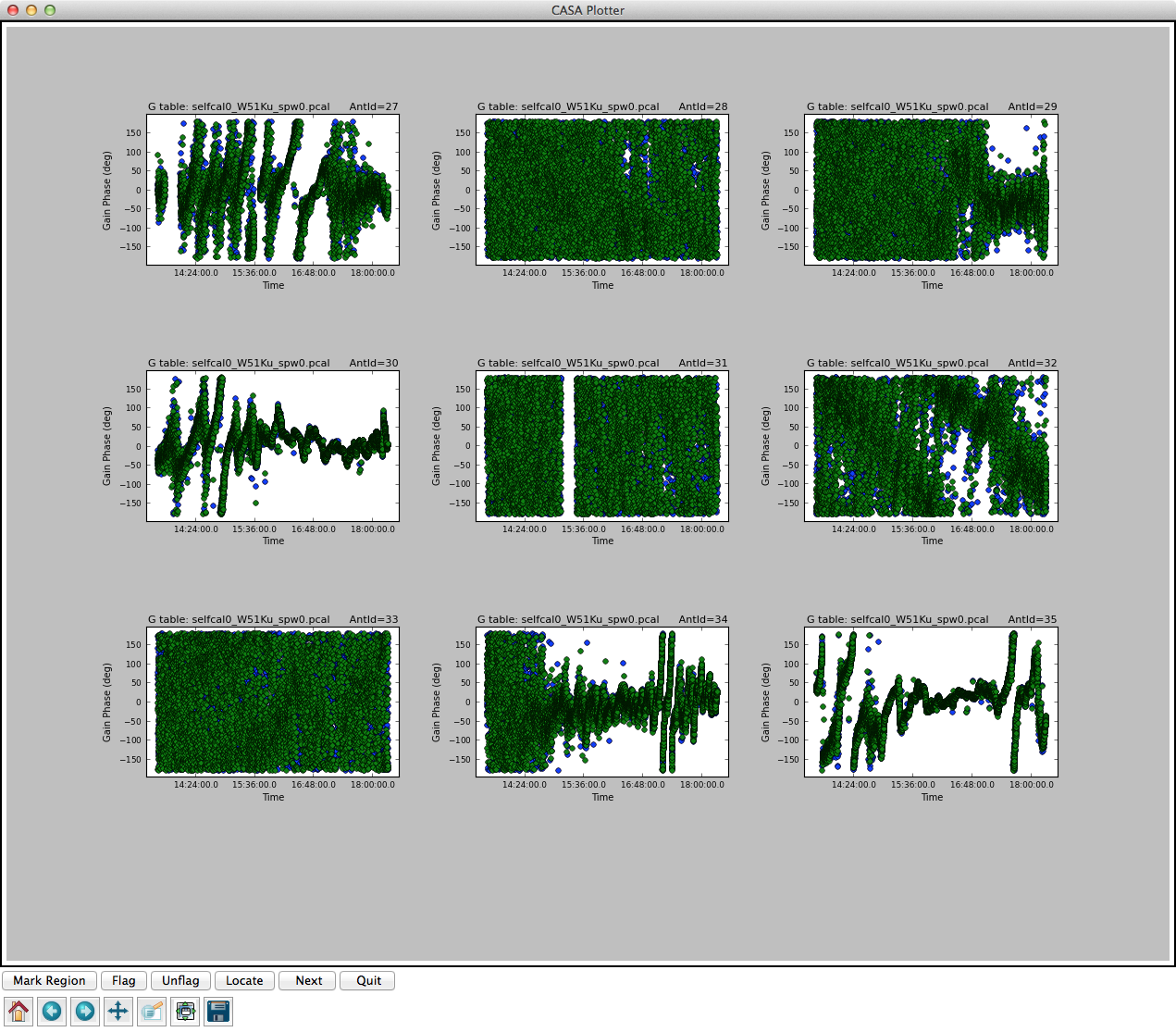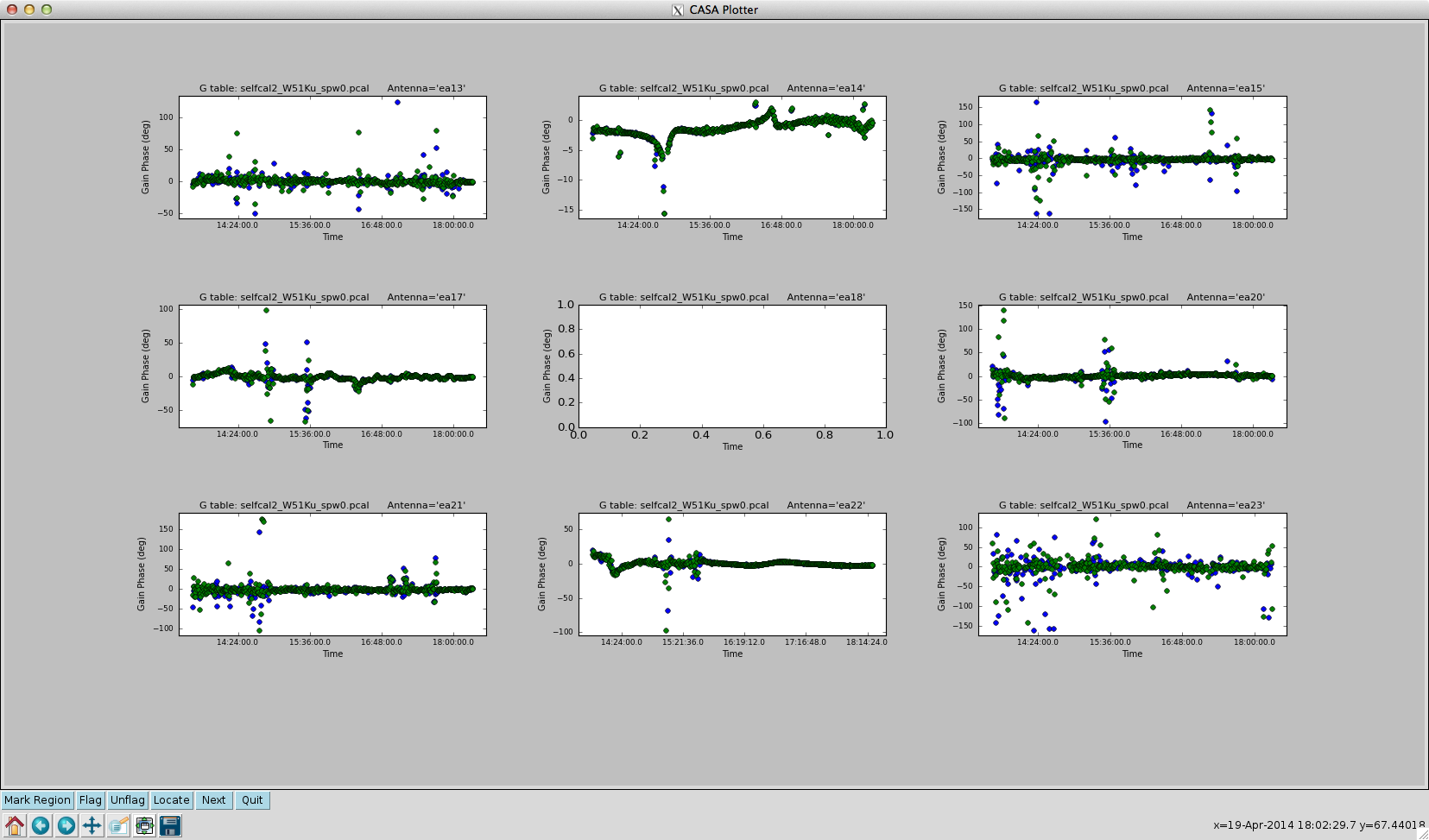I'm trying to self-calibrate my A+C array C-band data on W51, since we're in a clearly dynamic-range-limited regime. I've never had any luck with self-cal, though. The images always get worse, and I still don't really understand why.
This is a clue, though:

For many of the antennae, especially those in C array, self-calibration results in phase plots that look nice, with corrections confined to +/-30 degrees as you would hope and expect.
These plots show that some antennae are going through dozens or hundreds of phase wraps. That is obviously unacceptable and incorrect: the original images actually looked pretty good, so it is obvious (to me, at least) that there should be no phase wrapping in the self-cal. I'm surprised at this, since each of these points should have S/N > 3 and there is a lot of consistency in these large phase shifts.
My suspicion is still that the clean process has failed. I have been trying multiscale clean, since the emission is completely dominated by extended components. However, even if I set smallscalebias to different values, there are essentially no pointlike components being added to the clean model. This is wrong! There are genuine point sources. So I still suspect that this is a modeling problem and the phase wraps are being caused by bad models.
I'm trying again with smaller pixels in the hope that a better match between the beam size and the pixel size will produce a better model. The only other thing I can think to try is increasing the solint, but given the high S/N already present, I doubt that's an important factor.
Smaller pixels didn't help, but forcing clean to include point-source components by performing a second round of clean with multiscale=[] worked! The solutions are MUCH more reasonable (no more phase wrap every integration), and selfcal no longer diverges. I also increased the solution interval to 30s since it seems that the phase change timescale is significantly longer than an integration. I increased the S/N cutoff to 5 too.
There are still some "noisy" phases, even in the 3rd iteration:

I think more iterations may be necessary, but I will also increase the S/N threshold to 6 and solint to 60s to see if that helps.
RMS improvements are evident but not spectacular:
SPW4 Iteration 0: RMS=1.003e-04 SPW4 Iteration 1: RMS=6.009e-05 SPW4 Iteration 2: RMS=6.698e-05 SPW4 Iteration 3: RMS=7.061e-05
The bump in the last one is because I forgot to add a point clean for the last iteration.
Perhaps not unfortunately, it looks like the improvements in image quality are tiny when self-cal is added. The only real hope now is that self-cal on all bands will result in an artifact-free final combined image.
On the "noisy" phases, now that it looks like there are decent solutions, it may actually be worth keeping the flags generated by applycal. <10% of the data is being flagged out, which is negligible, and it probably is genuinely bad (or signal-free, anyway) in that case.
EDIT: Looks better... or at least different... now:
SPW4 Iteration 0: RMS=1.003e-04 SPW4 Iteration 1: RMS=5.962e-05 SPW4 Iteration 2: RMS=6.817e-05 SPW4 Iteration 3: RMS=6.775e-05